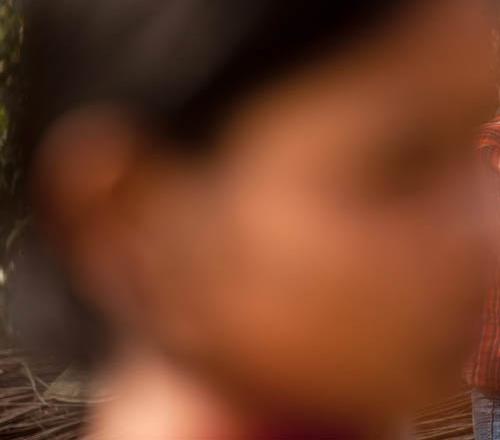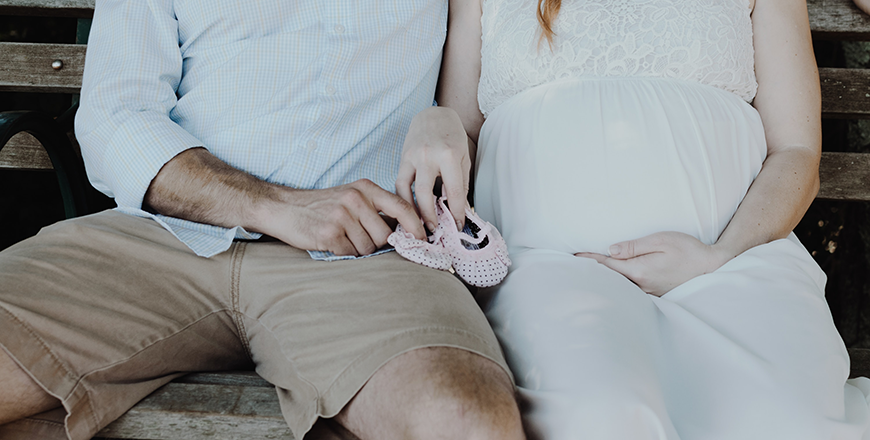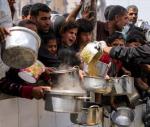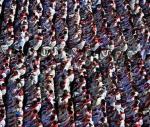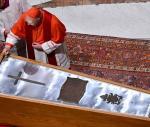You are here
DoS survey discovers drop in Jordan birth rate
By Rana Husseini - Mar 27,2019 - Last updated at Mar 27,2019

In this undated photo, doctors and nurses pose for a photo with a woman who recently gave birth to quadruplets. According to a recent Department of Statistics’ survey, Jordan’s birth rate has witnessed a ‘major’ drop (Petra photo)
AMMAN — The Department of Statistics’ (DoS) director general on Tuesday said the birth rate among Jordanian families stood at 2.7 per cent, a “major” drop compared with the last two decades.
DoS Director General Qasem Zu’bi’s remarks were made during a one-day event to release the results of the Jordan Population and Family Health Survey 2017-18 (JPFHS), which was held at the Bristol Hotel.
“There was a major drop in the birth rate figures and household members in comparison with the last two decades,” Zu’bi said.
The results found that Jordanian households contained an average of 4.7 members.
Zu’bi attributed the drop in fertility rates to several factors, including economic conditions and women’s participation in the labour market.
“Working women [have] started thinking more of birth control in order to organise time so that they can manage their family affairs in the best manner,” Zu’bi explained.
He added that the average age of marriage for women was 22 years old, while the average age for men was 27 years old.
“Around 55 per cent of women in Jordan aged between 15 and 49 are married,” according to Zu’bi.
The DoS report found that Syrian refugee families’ birth rate stood at 4.1 per cent.
Other figures revealed by the survey stated that 12 per cent of households are headed by a woman and almost one-third of Jordan’s household population was under the age of 15.
Ever-married women (women who have been married at least once in their lives) aged 15 to 49 in Jordan have completed a median of about 11 years of education, according to the survey, while more than three-quarters of women have attended at least a secondary school and 36 per cent continued their education beyond secondary school.
The DoS director added that for the first time in the department’s history, the survey received a 98 per cent response rate.
A nationally representative sample of 14,689 ever-married women aged 15-49 in all selected households and 6,640 men aged 15-59 in half of the selected households were interviewed for the 2017 and 2018 JPFHS.
Zu’bi added that he was hopeful the “results of the survey would be a tool in the hands of the government and the local NGOs to form their future plans and strategies”.
The JPFHS, which was implemented by the DoS from early October 2017 to January 2018, is the seventh Demographic and Health Survey conducted in Jordan since 1990.
The objective of the survey was to provide up-to-date information on fertility levels, marriage, fertility preferences, awareness of family planning methods, breastfeeding practices, nutrition, childhood mortality rates, maternal and child health information and awareness.
Other objectives included providing figures on behaviour regarding HIV/AIDS and other sexually transmitted infections, household health expenditures and women’s experience of violence.
The JPFHS was funded by the government, the US Agency for International Development, UNICEF and the United Nations Population Fund, according to a statement from the DoS.
Related Articles
The rate of girl marriages in Jordan dropped from 10.6 per cent in 1990 to 6.3 per cent in 2012, according to an official study.
AMMAN — The birth rate for women in Jordan for 2023 reached 2.6 children for every woman in the reproductive age, with rural areas recording
AMMAN — Shorter time span for childbearing, urbanised way of living, people’s nutritional approaches and cultural shifts are among the facto


